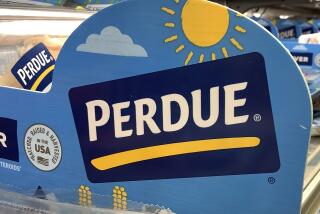FDA, in a turnaround, says pregnant women should eat more fish

The FDA, in a change of course, now wants pregnant women to eat more fish. But not the kinds that are high in mercury.
Altering its 2004 advice to shun most seafood, the Food and Drug Administration said Tuesday in an updated report with the Environmental Protection Agency that pregnant and breast-feeding women and young children should eat fish that is low in mercury levels to gain important health benefits.
Those fish — including salmon, trout, anchovies and sardines — are high in essential omega-3 fatty acids. The FDA also noted that pollock, shrimp, talapia, catfish, cod and canned light tuna are safe to consume while pregnant or breast-feeding.
For the first time, the agency set a minimum amount of fish needed in the diets of pregnant and breast-feeding women and young children. Previously, the FDA put a cap on the amount of fish pregnant women and children should eat, but not a floor. The updated advice aligns recommendations for pregnant women and young children with those in its 2010 dietary guidelines for Americans.
“Seafood can be a great source of protein, iron and zinc — crucial nutrients for your baby’s growth and development,” wrote Dr. Roger W. Harms, a pregnancy specialist at the Mayo Clinic in Rochester, Minn. “In addition, the omega-3 fatty acids in many fish can promote your baby’s brain development.”
The updated draft still leaves much to be desired for consumer groups, such as the Mercury Policy Project, which was disappointed with the agencies’ failure to require labeling and address exposure risks from Americans’ consumption of canned tuna.
“Over one-third of Americans’ exposure to methlymercury is from tuna, because tuna are higher-mercury fish and Americans consume so much,” said Michael Bender, director of the Mercury group.
“Albacore ‘white’ canned tuna generally has three times as much mercury as ‘light’ tuna. However, Americans consume about three times as much of the light variety,” he said. “Therefore, each variety — white and light — contributes a staggering 16% of Americans’ dietary exposure.”
Although new labeling procedures were not included in the updated guidelines, the agencies said women should consume at least eight ounces and up to 12 ounces, or two to three servings, of a variety of seafood each week. The new guidelines also recommended limiting consumption of white tuna to six ounces a week.
The report cautioned pregnant and breast-feeding women to avoid shark, swordfish and king mackerel, as well as tilefish from the Gulf of Mexico, and other large, predatory fish associated with high mercury levels.
“If you regularly eat fish high in mercury, the substance can accumulate in your bloodstream over time,” Ostroff said.
More to Read
Inside the business of entertainment
The Wide Shot brings you news, analysis and insights on everything from streaming wars to production — and what it all means for the future.
You may occasionally receive promotional content from the Los Angeles Times.










